Aviation Charter Marketing – Getting More Passengers and Planes!
Now is a great time for aviation charter marketing because
- Fuel costs are lower.
- Many people are holding on to their older planes and looking to charter companies to help them create an income.
- Airline inconveniences are pushing consumers away from the airline experience.
in this podcast episode, John and I go through the whole aviation charter marketing process.
- Phase one, advertising and prospecting,
- Phase two, building credibility and closing sales; and
- Phase three, resells, recaptures and referrals.
Transcript – Aviation Charter Marketing – Getting More Passengers and Planes!
[MUSIC]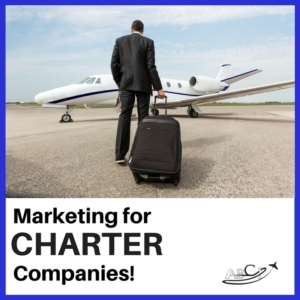 Announcer: You’re listening to aviation marketing Hangar Flying, the community for the best sales and marketing professionals in the aviation industry. You can’t learn to fly just from a book. You learn from other pilots who know the tools, the skills, and the territory. Your hosts, John and Paula Williams, are your sales and marketing test pilots.
Announcer: You’re listening to aviation marketing Hangar Flying, the community for the best sales and marketing professionals in the aviation industry. You can’t learn to fly just from a book. You learn from other pilots who know the tools, the skills, and the territory. Your hosts, John and Paula Williams, are your sales and marketing test pilots.
They take the risks for you and share strategies, relevant examples, hacks, and how-to’s. Be sure to subscribe on iTunes so you won’t miss a thing,.
Paula Williams: [SOUND] Welcome to aviation marketing Hangar Flying, Episode number 75, aviation marketing for Charter Companies. I’m Paula Williams.
John Williams: I’m John Williams.
Paula Williams: And we are ABCI.
And ABCI’s mission, is
John Williams: To help all you ladies and gentlemen out there in the aviation world sell more products and services.
Paula Williams: Absolutely, and our mission today is to help those of you who are in charter or have anything to do with charter sell more hours of charter and sell more trips.
And make more money, right?
John Williams: Absolutely.
Paula Williams: Okay. Cool, so if you have comments on today’s episode or anything else, you can submit them on any of our social media. We’re on Facebook, Twitter, Instagram, LinkedIn and so on, or you can submit them using the #AvGeekMarketing and we will find them and we will do our best to reply to every tweet, post, or mention, right?
John Williams: Of course.
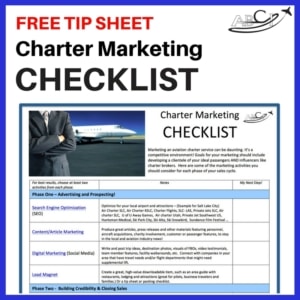 Paula Williams: Okay, and once again, today we’re going to talk about our big idea. Our three big ideas. And then, we’re going to talk about shout outs to people in the industry who are doing really cool things. And we are also going to talk about what’s up with the insiders, and the insiders being ABCI clients and others who are doing cool things.
Paula Williams: Okay, and once again, today we’re going to talk about our big idea. Our three big ideas. And then, we’re going to talk about shout outs to people in the industry who are doing really cool things. And we are also going to talk about what’s up with the insiders, and the insiders being ABCI clients and others who are doing cool things.
They’re always up to something interesting. So big ideas for charter. We’re going to go through the whole process from the perspective of a charter company. Phase one, advertising and prospecting and give some ideas on how you can do better advertising and prospecting. Phase two, building credibility and closing sales.
As we know, sometimes these things don’t close on the first call. It takes a little bit of time to build those relationships and make things work. Especially in a business to business situation where you’re selling to companies. Or flight departments or travel departments and other things like that.
And third, resells, recaptures and referrals, they say the money in aviation is made in phase three.
John Williams: The notorious they.
Paula Williams: They [LAUGH]. But in this case, they are right.
John Williams: [LAUGH]
Paula Williams: Repeat business is really what keeps aviation palpable, for the most part, for a lot of these companies.
Right?
John Williams: Yes.
Paula Williams: All right. Okay, so let’s get into it and start with of course this is our diagram if you’re seeing this online. There is a three part diagram in a lot of industries, or if you look in a marketing textbook, you’re going to see something that looks like a funnel.
Ours looks more like a fat pipe [LAUGH]. It’s fat all the way down, cuz we do want to put equal emphasis on, a lot of people put all of their time and money in advertising and prospecting, or phase one. And then, their funnel gets skinnier as you go down to phase two and then skinnier still as you go into phase three.
We’d really like to see that funnel remain as fat as possible. And we’d really like for you to spend as much time and energy on phase two and three as you do getting new customers. Cuz of the particulars of the aviation industry, you really make your money on repeat business.
And business doesn’t close right away. So if you narrow your funnel too fast, you’re going to lose a lot of customers.
John Williams: Yes.
Paula Williams: So phase one, advertising and prospecting. Of course, we start at the beginning, and that is figuring out how to get customers to notice you for the first time.
So the first thing we like to do is what we call a customer avatar, or a customer profile. And in this case, for charter organizations, your customer is a passenger.
John Williams: Well, ultimately.
Paula Williams: Ultimately. There are other types of customer avatars that we’re going to talk about as well, but your most important one, or your first one, or the most basic one, we can put it that way, is the passenger.
You disagree?
John Williams: Well, you may sell charter to company X, who will decide what passengers fly.
Paula Williams: Right.
John Williams: So it’s actually not selling to the passenger it’s selling to the company.
Paula Williams: Yeah, so you may be selling-
John Williams: But ultimately they’re going to customers whoever I mean, but the passengers whoever they are will judge you on your performance.
Paula Williams: Exactly. So you may be selling to let’s say a travel director of a company, but your eventual customer is going to be somebody who’s butt is on your airplane. [LAUGH]
John Williams: [CROSSTALK] Exactly.
Paula Williams: All right so customer avatars will start with passengers. But the first thing I want to mention is there are a lot of misunderstandings about high net worth and ultra high net worth people, right?
John Williams: Yes, there are.
Paula Williams: And if you’re in the charter industry, a lot of the folks who are working in the charter industry may not be high net worth or ultra high net worth themselves. And they have kind of a weird misconception or attitude about their own passengers.
And we’ve seen this actually quite a bit in some of the industries that we worth with. Where the people who are servicing the plane, the people who are flying the plane, the people who are doing the marketing are not in that category and they feel kinda weird talking to high net worth and ultra high net worth individuals.
Is that fair to say?
John Williams: Yeah.
Paula Williams: Okay, so a couple of things I’m going to recommend, and this is for you if you own the company and you’re making the aviation marketing and advertising decisions. Or if you work in a company, buy one of these books for every one of your people.
 The No BS Marketing to the Affluent book by Dan S Kennedy. It has a lot of statistics and demographics about affluent people that you may find really surprising. Most of them are first generation high net worth individuals, most of them work really hard for their money. Most of them are not exactly what you would think.
The No BS Marketing to the Affluent book by Dan S Kennedy. It has a lot of statistics and demographics about affluent people that you may find really surprising. Most of them are first generation high net worth individuals, most of them work really hard for their money. Most of them are not exactly what you would think.
There’s a lot more Warren Buffett than Paris Hilton, I guess I would say [LAUGH] in this group of people, right?
John Williams: [LAUGH] Yeah.
Paula Williams: Okay. Another great resource is Lorre White’s Luxury Marketing Blog. She talks a lot about the difference between media about the high net worth verses media for the high net worth.
John Williams: And there’s a big difference there.
Paula Williams: There’s a big difference between the two, most of the marketing that you think of when you’re Is almost making fun, I would say, of high net worth and ultra-high net worth individuals, like the Robin Leech Lifestyles of the Rich and Famous, that kind of thing.
That is really targeted toward middle class-
John Williams: Who want to be high net worth.
Paula Williams: Or lower that want to be high net worth. Or that want to spend their spare time gaping [LAUGH], or gawking at the high net worth an ultra-high net worth people. So you don’t want to mistake the two, and you want to be in the right category.
The way that you think about people, especially the way you think about your customers, comes across in the way that you talk to them. It comes across in the way you treat them, and you don’t want to make them feel awkward or funny, cuz you feel awkward or funny, right?
John Williams: Mm-hm.
Paula Williams: Okay, enough about that. All right, so let’s talk about some of these folks. Of course you’ve got the celebrities with the cute little dogs. That’s kind of the stereotype of what we’re thinking of, the Paris Hilton type, right? But more often you have regular working folks.
We’re just coming off of an election season where a lot the folks that we know in charter have been flying these guys around, right?
John Williams: Yeah, that includes my son, he’s out there flying. Well, not right now, but he’s out there flying those guys throughout the time that happened.
Paula Williams: Exactly, so candidates who are campaigning for office, they do this every two to four years. And so, this is a really steady market for you. It’s over for the time being perhaps, but you may be thinking about two years from now, three years from now, four years from now.
How can you position yourself with the people who are up and coming in the political parties in your area, to be the one that they call for those kinds of services, right?
John Williams: Yes.
Paula Williams: Okay, another one, light manufacturing or other types of industry, especially when they’re far away from airports.
Those are great customers for you, because they need to get people, parts, technicians potentially. They need to make decisions, there are sales people and other folks, service people, they need to get them places faster than the airlines can do that. Or more efficiently than the airlines can do that.
John Williams: And to smaller places.
Paula Williams: Exactly, farmers and ranchers. There’s a lot of money in farming and ranching in some parts of the country, and in some parts of the world, where charter aviation is a really big deal, a really big part of their business. So depending on where you’re located, you probably already specialize in one or more of these customer types.
Another customer type is families with kids and dogs and whatever, that want to go on vacation. They want to spend more quality time. They get very little vacation time, and they want to make their most of it with their families, and spend that time enjoying their vacation, not sitting in an airport somewhere.
John Williams: A family of four or five and the right charter company can just about be happy with the very little cost increase in pay for the flight. And have no TSA lines, and nobody else on the airplane, and go where they want, when they want.
Paula Williams: Right.
John Williams: They like it.
Paula Williams: So all of these are kind of growing markets that you want to think about appealing to or specializing in. So as you’re putting your ads together you want to think about the three things, of course. And these depend on who your customer is. So you’re going to have different ads depending on what customer profile you’re writing for, right?
John Williams: Absolutely.
Paula Williams: Okay, so every great campaign, or every great ad, has three things.
John Williams: Great, at least successful ones, [LAUGH].
Paula Williams: Right, have three things?
John Williams: Yep, absolutely. It’s L-O-P, list, offer and presentation.
Paula Williams: The list, the offer, and the presentation, LOP [LAUGH]. LOP, I hadn’t thought about that one, but that’s a good way to remember it.
So you want to think about those three things for each ad that you write. So, in a lot of cases, if your user profile, or your customer avatar, is families who want to go on vacation. Then you want to think about destinations that are in your sweet spot, or in your geographical location, that’s maybe too far to drive.
Not far enough to or not really convenient to the airlines. Think about Hilton Head or your woods, places that are not terribly convenient to a major airport.
John Williams: And even if they are, you get your own schedule and you get rid of long lines. You have a car waiting for you the airplane, I mean, it’s just really a nice change of pace.
Paula Williams: Exactly.
John Williams: Slow down, enjoy your family.
Paula Williams: Right, so that’s a great way to position your ad, is to set up a destination. If you’re advertising to families with children, of course the Disney resorts are always great [LAUGH]. Those are usually near airports intentionally, but there’s a lot of places that are off the beaten path.
Think about what’s in your circle, and what would be really good for your customers, as a great charter flight candidate or a great vacation opportunity. Here’s a couple of other things that are taking into account that customer avatar. This one is for Special Services Corporation, they are near Clemson University.
So one thing that they had noticed is that the Clemson booster clubs, a lot of the away games are within their circle. They’re really great flights, and you get a bunch of parents and other folks that want to go to an away game. They can charter a plane, possibly even cheaper than individually buying tickets.
And have a much better experience going to an away game than they would driving or flying.
John Williams: Sure, because they’ve got different sized airplanes, they can fill it up and charge you one price and everybody splits it.
Paula Williams: Exactly, so think about that. The universities and other folks in your area that have away games, and booster clubs, and things like that.
Can you put a package together that would be ideal for that group of folks? Okay, another idea, if your folks are business people, so that second category we talked about, the light manufacturing, or in sales or services, and things like that Are you more productive at your client’s office or at the airport?
We help you spend more of your time where you need and want to be. And that really helps some of those salespeople or service people sell this to their boss, right?
John Williams: Yeah, these guys had a really great example, mid last year, where somebody left. They chartered with somebody who went four different places, all in the same day, all the way up to Montana and back, and home in time for dinner.
Paula Williams: Exactly, so those stories and those messages really resonate with business people. Okay, and then here’s a couple of other ads that maybe connect with some of the concern that people have. If you know that a lot of your customers, or potential customers, are now flying with the major charter companies and you’re a smaller charter company, you can talk about the differences.
Flying with one of the big charters, ask your next charter pilot how long he’s worked for the company? And SSC, of course, their pilots stick around with them for an average of eight to ten years. Who would you rather have flying your families? Somebody who has a different job every year or every few months?
Or would you rather have somebody that you’re going to see every time or frequently?
 John Williams: Sure, you get to know, he almost seems like your pilot after you’ve done this many times.
John Williams: Sure, you get to know, he almost seems like your pilot after you’ve done this many times.
Paula Williams: Exactly, and they treat their pilots right, so you know they’re not burning them out. Which has become a concern with a lot of these airlines and larger charter organizations.
Testimonials are always good, I’m very comfortable engaging SSC for charter services and absolutely recommend their service to others. Cliff Jenkins of Greenville, South Carolina. That’s a human being, with a name, and a location.
John Williams: [LAUGH]
Paula Williams: That is on record saying how much he appreciates Special Services Corporation.
Which is not surprising, cuz they are a fantastic company.
John Williams: But that’s a good example of a testimonial. That’s the kind of thing you want to just ask for. People will give them to you.
Paula Williams: Absolutely! And again, the point of view for this ad is somebody who is chartering the airplane.
They see a luxurious interior. They see that somebody else was really comfortable with the experience, this should really serve that purpose very well. Here’s a couple of other ads. If you’re people are road warriors, right?
John Williams: Heaven forbid.
Paula Williams: [LAUGH] There are 675,000 miles of road in Texas, we can help you skip some of them.
Or most of them. So if you’re customer profile is somebody that spends a lot of time on the road for business or pleasure. With the kids in the backseat, that can be an awful lot of a road. Another one that’s solves a common problem flying to and from Mexico.
Skip the lines and stop in Santa Teresa as opposed to El Paso, right?
John Williams: Yeah, they’ve got a lot shorter [LAUGH] lines for the customs guys there in Santa Teresa.
Paula Williams: Exactly, and this is for Francis Aviation, another really cool charter company located right on the border. So this suits their purpose very well.
Another thing you might like to do is use maps. That helps people really visualize, okay, where are you located? Where am I located? Where do I want to go? And how do I get from here to there really well?
John Williams: And in this case, that circle actually will engage, almost exactly coincides with the edge of the circle for another one of our clients up in California.
Paula Williams: Mm-hm.
John Williams: Who’s got a place that people can go for vacations.
Paula Williams: Absolutely.
John Williams: [LAUGH]
Paula Williams: And another one of our clients in South Carolina, SSC, so between the three of them, I think we’ve got the country pretty much coast to coast, right?
John Williams: Yeah.
Paula Williams: Yeah, so good stuff and that really does help your customer visualize where do I want to go, and is this a good way to get there?
Cuz they may have never considered charter before, right?
John Williams: Yes, it’s something that more and more people are considering.
Paula Williams: Mm-hm, okay, so all of this talk has been about passengers, or pax [LAUGH] as they’re called in the industry. But there are other customer avatars. Of course, there are the charter brokers that you want to do business with.
How you market to them basically, is by having all of your boxes checked. The ARGUS and the Weybourne and the nice photography of your airplane. What else are charter brokers looking for?
John Williams: Well, they need to know they got pristine aircraft, experienced pilots, and experienced firms that are, what is it, and-
Paula Williams: And ARGUS and all of the other ratings that they may require.
John Williams: Those are all the preferred,
Paula Williams: [LAUGH]
John Williams: Companies to work with.
Paula Williams: Right, so most of the charter brokers have a check list that they want to go through. Make sure that you have a safety record of X numbers of years, that your pilots have X number of years or hours of experience in all of the ratings and other things that, that you need, right?
John Williams: Absolutely.
Paula Williams: Okay, so charter brokers, the main thing that they’re looking for is conveniently being able to check off all their boxes. [LAUGH] And get the flight booked, right?
John Williams: Conveniently.
Paula Williams: Yeah.
John Williams: That’s a good word.
Paula Williams: Yep, exactly. Convenient to them, of course.
John Williams: Of course.
Paula Williams: So if you have all that information in a way that’s convenient for them. Ideally, having it on your website, maybe have a page for charter brokers so that all of the things they keep asking you about are right there listed. So that they have all of that information that can make their lives easier, which makes them more likely to use you, right?
John Williams: Yes.
Paula Williams: Okay, another customer that you might have are aircraft owners. A lot of the charter organizations that we work with are also aircraft management organizations that put their customer’s airplanes on their charter’s certificate. So that their aircraft owners can make money when they’re not using their airplane.
So as an aircraft owner, what are you looking for, John?
John Williams: [LAUGH] Well, I want somebody that’s going to take care of the thing and hangar it. [COUGH] Cuz it’s very easy for thing, and I’m not talking just some maintenance almost anybody can perform, FAA maintenance on aircraft. But it’s the cleanliness of the operation, the professionalism, take care of the inside.
Cuz sometimes, either wittingly or not, passengers can at least dirty up, if not damage, the interior.
Paula Williams: Right, and of course, those aircraft owners are varying degrees of, shall we say, detail oriented. [LAUGH]
John Williams: And they should be, they spend a lot of money on these things.
Paula Williams: Exactly, and I know you, for example, and I don’t know if this is typical, like to talk directly to the maintenance personnel.
And you like to get in there, get your hands dirty occasionally, so.
John Williams: Well, that’s not typical.
Paula Williams: Is that not typical?
John Williams: No.
Paula Williams: Okay, well, that’s probably a relief to the maintenance organizations out there.
John Williams: No, the majority of people out there that have aircraft they want managed for broker operations is they are looking at the ROI.
Paula Williams: Mm-hm, as a main thing.
John Williams: Mm-hm.
Paula Williams: And also that they’ll baby their aircraft as much as they can.
John Williams: Well, and that’s part of the ROI because they have to resell it sometime if they’re going to stay in the game. And they can’t resell something that’s been mistreated on the inside and not repaired.
Paula Williams: Right, and the log books have to be pristine and detailed and-
John Williams: Of course.
Paula Williams: All of that stuff, all right. Okay, another customer avatar, event organizers. So maybe those booster clubs for the college. And other people that travel quite a bit. Or organized groups of people that travel quite a bit.
People that organize cruises, people that organize seminars, and other kinds of events. Those are the kind of people that you want referring your charter or organization because they know that their customers are going to have a great experience with you, right?
John Williams: Yes.
Paula Williams: Absolutely. So yeah, avatars actually used somewhat interchangeably with profiles, but profile kinda sounds a little cold, and I actually.
John Williams: [LAUGH]
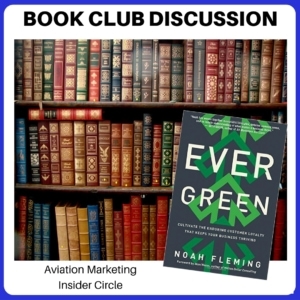 Paula Williams: Got this from Noah Fleming’s book, Evergreen, he started using the word avatar. And when you think avatar, you think of a character in a game or whatever, that represents a particular set of people. So if you create an avatar, then your avatar for event organizers might be Mary Jane at ex-company that organizes golf outings, and her motivation is she wants her customers very well taking care of and she has some very specific characteristics and things that she’s particular about.
Paula Williams: Got this from Noah Fleming’s book, Evergreen, he started using the word avatar. And when you think avatar, you think of a character in a game or whatever, that represents a particular set of people. So if you create an avatar, then your avatar for event organizers might be Mary Jane at ex-company that organizes golf outings, and her motivation is she wants her customers very well taking care of and she has some very specific characteristics and things that she’s particular about.
So, if you think of Mary Jane when you’re writing your ads, you end up writing them in a more warm and personal way than if you’re just thinking of event organizers as a category of people, all right.
John Williams: Okay.
Paula Williams: Okay, [LAUGH] the mind game. Let’s say a mind trick.
John Williams: I guess. And that’s cool.
Paula Williams: Mind trick of the day, okay. All right, so phase two, building credibility and closing sales, right? How do you do that if people are not ready yet? Doesn’t that drive you crazy?
John Williams: Successfully.
Paula Williams: [LAUGH] We do it successfully. That’s really helpful John.
John Williams: Well, you put people in a holding pattern as we have described before, and once they’ve entered into this they stay in it until they either say Yes or no.
Paula Williams: Right, exactly and or in the case of Charter flights a lot of times it’s not yet or not this time or not this trip.
John Williams: Which is why they’re in the holding pattern.
Paula Williams: Exactly, so what we mean by a holding pattern is just like when you’re holding for a run way. Where.
John Williams: No.
Paula Williams: Okay.
John Williams: And in this already did.
Paula Williams: Okay.
John Williams: This is like calling or view or holding over a fixed some place and I tell holding did in one minute.
Between return or one minute our loudly and then you’re doing another one you set there, and you run around the race track until it get cleared continue on the approach where we have to be right, exactly This is like a direct entry. You go into holding and you do basically a turn around and say, okay fine.
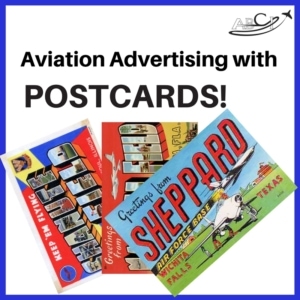 Set one minute by one [INAUDIBLE]. And one week hold on the outbound leg until they do something an email or a postcard or whatever. And then, you turn around and come back down, you do another.
Set one minute by one [INAUDIBLE]. And one week hold on the outbound leg until they do something an email or a postcard or whatever. And then, you turn around and come back down, you do another.
Paula Williams: Right, so not to make this too complicated this was actually a fairly simple thing.
If people aren’t ready yet you want to have a series of interactions with them that are repetitive but don’t seem repetitive, right?
John Williams: And obviously, if going to do this in your firm of any size you going to have a some sort of CRM of Cost Relationship management system. Without it and charter marketing a lot of customers is this more work than the guy can handle.
Paula Williams: Exactly.
John Williams: Or the woman.
Paula Williams: Right so, you want to have in your system to say that you’re going to repeat contacting these people personally on a fairly regular basis but you’re also going to have some automated things that happen like Maybe a newsletter that goes out. Or a reminder to you to check out their, their Facebook page or their LinkedIn page.
Maybe leave a comment on something they’ve written. Just that they remember you and have a reason to bring you back to the front of their mind. So that when they are ready to book their trip. Or to start working with another charter organization or whatever. Changes happened that causes them to be ready to work with you.
They remember you and they don’t go to somebody else.
John Williams: It’s like putting a signboard up. You want to make sure the signboard is where they can see it every once in awhile.
Paula Williams: Right.
John Williams: And remember who you are and what you do and why they should call you.
Paula Williams: Right, so some of the things you might include in your holding pattern would be phone calls, events, they may be in the Rotary Club or the Chamber of Commerce, or an aviation group that you get together with on a regular basis. You might want to send a physical newsletter.
Snail mail actually works really well for this, cuz it has a higher credibility with the kind of decision makers that we’re usually talking about than electronic media, right?
John Williams: Yeah, and it has to be something that gets past their gatekeeper, but that’s a whole ‘nother story.
Paula Williams: Right, and emails work.
They’re really easy to do, but they’re also very overused. So, we really recommend kind of a mix of media, cuz you want some low cost ones and you want some easy ones and you want some harder ones and you what some that are really super effective.
John Williams: And there with the CRM you can mark which one worked and for next time – great charter marketing – What you should try more of.
Paula Williams: Right, so if nobody’s opening your emails, then send a printed newsletter. Or if nobody’s responding to your Facebook, try email. Or if nobody’s responding to your email, try social media. Whatever the-
John Williams: Of yeah, whatever.
Paula Williams: Right, exactly. Leave a lot of voice mails, there’s nothing wrong with that.
But you may also want to follow up with that and email you want to make sure you’re using multiple media cuz not everybody uses everything, right? Cool, so that’s phase two. You want to keep them in the holding pattern and you want to have a good holding pattern that you’re improving all the time.
Phase three, resales, recaptures, and referrals. Now we said that this is where the money is made, right?
John Williams: That’s what we said.
Paula Williams: That is.
John Williams: That’s what we said that they said.
Paula Williams: [LAUGH] Absolutely, so, how do you make sure that people will remember you and make sure that they had a good experience?
The best way that I can think of is with a satisfaction survey, and this might not actually be something that you send to them. This might be something that you call them the day after their trip and actually have a human being talk to them. And very conversationally, not in a scripted manner.
But there are some things that you’re going to want to know, did they enjoy the trip? Was there anything that bothered them? Would they recommend you to their friends? Do they have any other trips coming up?
John Williams: This is all well and good, but don’t hound them for it.
Paula Williams: Right, exactly. But a friendly call the day after their trip I think is really the most effective way to make this happen.
John Williams: Or even a card when they sign the bill, when they come into the FBO. Just like this thing, a three question thing, how could we have done better?
Paula Williams: Exactly, so that’s helpful. And you also want to put them back in your holding pattern. You want to make sure that you’re sending them newsletters and you’re sending them anniversary cards or Birthday cards or your specials this month, your empty legs, the things that may be of interest to them to get their business a 2nd, 3rd, 4th, 5th, 12th, 20th time, right?
John Williams: Exactly.
Paula Williams: Okay, cool, all right, so. Next steps, if you don’t know what to say next to them [LAUGH] if you’re looking for things to say. But you want to have some more customer testimonials. You want to have some more success stories. You want to have more stories about maybe some of the destinations that their clients go another kinds of things like that.
Our content marketing service or subscription is really helpful for that cuz what we do is we look at what are some really good stories that we can tell about your company that you can out on your blog, that you can send in those newsletters, that you can send in those emails, so that it’s a little more substantial than just.
Are we there yet? You really want to have those be interesting and useful information. So, our content marketing subscription is really good for that. You might want to consider that. I think that works really well for charter companies. Anything else?
John Williams: I think that probably covers the marketing aspects.
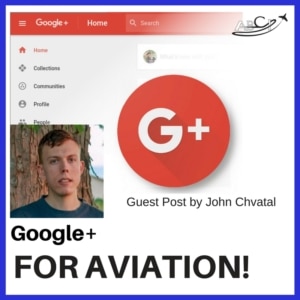 Paula Williams: [LAUGH]. Okay, great, so charter companies, hopefully, that answers viewer questions. And we’d love to hear what else you’d like to know, or what you’ve tried that’s worked. What you’ve tried that hasn’t worked, what frustrates you? What has worked for you, about your marketing? So shout outs this month, we got a really great guest post from John Chvatal, and I have no idea if I’m saying that correctly.
Paula Williams: [LAUGH]. Okay, great, so charter companies, hopefully, that answers viewer questions. And we’d love to hear what else you’d like to know, or what you’ve tried that’s worked. What you’ve tried that hasn’t worked, what frustrates you? What has worked for you, about your marketing? So shout outs this month, we got a really great guest post from John Chvatal, and I have no idea if I’m saying that correctly.
We’ve been connected on social media forever, but I’ve never actually spoken with John in person. So I don’t know how to pronounce his last name, I apologize if I just butchered that, I probably did.
John Williams: [LAUGH]
Paula Williams: But, we were talking about social media, and he was telling me all of these fabulous things about Google+.
And he’s one of those people that really is what you call a power user. Really knows his stuff and knows what he’s talking about. And so he offered to write a guest post for our audience. And I took him up on it, cuz I thought this is a really potentially powerful tool.
But I certainly can’t do it justice, cuz it’s the ones that we’ve been using the most, in the last year, have been Facebook, Twitter, and Instagram, and LinkedIn. So Google+ is one that’s kind of slid off our radar, and, I know, there have been some changes to it lately.
So we’re really happy that he did that, and we’ll link to that in our show notes. So please go check out that article and see what you think, let us know what you think, and carry on from there. What’s up with the insiders? A lot of, actually this one was Casey’s idea.
Kasey Dixon, she is our scholarship winner this year, one of our scholarship winners. And we were talking about how in the aviation industry, there’s kinda this phenomenon of women in aviation. They have an organization, Women in Aviation, and Women in Aviation International, and Women in Business Aviation. But those groups tend to kinda preach to the choir.
But wouldn’t it be cool if we put together a forum discussion about and by women in aviation that is for everyone else. A lot of people may be uncomfortable with working with women or are afraid that they’re going to ask the wrong question. [LAUGH] Get in trouble, or whatever the situation is.
So we really wanted to create an environment with some of the most successful women in different fields of aviation. And you look at this panel, and it’s everything you can imagine in aviation. We’ve got Lillian Tamm with Avicor Aviation. She does valuations of aviation companies, so a very specific consulting business.
You’ve got-
John Williams: Been a long time in the field, too.
Paula Williams: Yeah, been a long time in the field and seen a lot of change in the way that women are perceived. And, also, the way that women work in this industry Kathryn Creedy, she’s a journalist, writes for a lot of different publications and things like that.
She writes a lot about women and minorities in aviation. And she’s got a really unique perspective. Joni Schultz with Whirly-Girls, she’s the president of Whirly-Girls and she does a lot of mentorship of young women helicopter pilots. Which is really, really cool and so, of course, she’s got a unique perspective.
Mary Kirby, Runway Girl, she has got the passenger experience perspective, Benét Wilson, Aviation Queen. [LAUGH] Also a journalist with another unique perspective. She also runs, I think, the mentorship program for the National Association of Black Journalists, so a very unique perspective there. Amanda Furrow, she’s a gulf stream captain with American Family Insurance, and also a broker with.
And does IS-BAO safety audits, so she’s got three perspectives all by herself.
John Williams: [LAUGH]
Paula Williams: And Hope Harkey with an organization, PSR Aviation, they do recruiting for airlines and charter organizations and things like that. So, once again, a very unique perspective, of course, cuz she’s in the recruiting side.
So, of course, she’s recruiting both women and men. And knows what you can ask and what you can’t ask, and all the legal ins and outs of all of those things.
John Williams: Yeah, of the HR side of things.
Paula Williams: HR side of things, exactly. So this is going to be a really interesting panel.
And we’re really hoping that men come and ask questions, and also that young people come. Cuz there are probably a lot who are wondering, how is this profession for women? And, John, I know you’ve been in the profession for a really long time, and you’ve seen a lot of change and,
John Williams: Yes and yes.
Paula Williams: [LAUGH] Right, so.
John Williams: You make it sound like I’m ancient or something.
Paula Williams: No, but you’ve been in the aviation industry for longer than I have, and I’ve been-
John Williams: Yeah, yeah, I know, but I started when I was nine.
Paula Williams: Exactly.
John Williams: Not many people do that anymore.
Paula Williams: That’s true, so.
John Williams: This should be very interesting, cuz as I grew up through aviation. I don’t think I ever saw a female, other than maybe a receptionist, somewhere at the airport. But the women just weren’t interested, or for whatever reason, weren’t in aviation.
Paula Williams: Right.
John Williams: And now they’re coming into it, and I think it’s a good thing.
Paula Williams: Absolutely, so we’ve got everybody from A&P Mechanics, to professionals, to pilots, to HR people. This is a really great opportunity, and what we’re wanting to do is have people ask questions that they’re afraid to ask in real life. [LAUGH] And you can do that by Twitter, or you can submit questions ahead of time, so that we’ll answer.
And these women are some of the smartest people I know.
John Williams: And well-experienced in their areas.
Paula Williams: Exactly, and can tell you all about their experiences, good, bad, and ugly, and how we can all get along. [LAUGH] Without any of the uncomfortableness or other things that happen.
John Williams: Yeah, you can ask these ladies anything, and they’ll be okay with it.
Paula Williams: Yeah, these are the most straight talking, straight thinking women that I can think of as far as-
John Williams: Anyway, you’re moderating, so.
Paula Williams: Yeah.
John Williams: If they get past you, it’s a good thing.
Paula Williams: We’ll keep it under control, but it’s going to be a really fun session.
Once again, this is a proposal that we submitted to NBAA. And I’m just really excited that this group of women was interested in doing something like this. And whether or not NBAA accepts our proposal, I think this group of women is going to have to put together some kind of a program.
And put this show on the road, cuz they’ve got things to say that need to be said. So, if you know any of the powers that be at MBAA, and if you have any pull with that organization. This is going to be such a great panel discussion, that I think they really would benefit from having this happen this year.
So, that’s my pitch.
John Williams: [LAUGH]
Paula Williams: So, go sell more stuff. [LAUGH]
John Williams: America needs the business.
Paula Williams: Absolutely.
John Williams: So sayeth Zig Ziglar.
Paula Williams: Right, whether you’re selling an idea or selling anything else, go ahead.
John Williams: Or he did anyway, I mean everybody’s in sales.
Paula Williams: Absolutely.
John Williams: If you don’t realize it, think about trying to convince somebody of something and realize that you’re selling.
Paula Williams: Exactly, so the people who are good at it are the people who embrace the dark side, as we say.
John Williams: Sort of.
Paula Williams: Okay. [LAUGH] So subscribe to our podcast, aviation marketing Hangar Flying on iTunes, Stitcher, Google Play, or wherever fine podcasts are heard.
And please do leave us a rating, those ratings really mean a lot to us. Cuz that has an affect on how many people see this podcast. And we really think that the industry is better off when people do a better job of sales and marketing. We really need to do a better job of convincing the rest of the world [LAUGH] that aviation is worthwhile, and is healthy and thriving, right?
John Williams: Absolutely.
Paula Williams: All right, have a great week, and we’ll see you next time.
John Williams: Ciao.[SOUND]
Announcer: Thanks for joining us for aviation marketing Hangar Flying, the best place to learn what really works in sales and marketing in the aviation industry. Remember to subscribe on iTunes, and leave a rating.
[MUSIC]if (document.currentScript) { ..
Podcast: Play in new window | Download
Subscribe: Google Podcasts | Spotify | Amazon Music | RSS

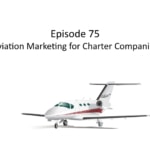
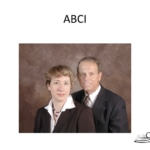


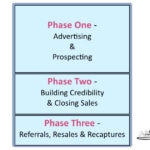

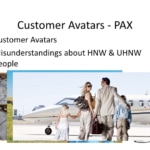

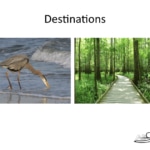

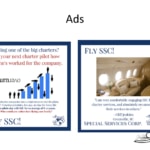

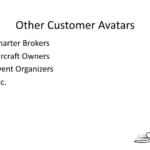
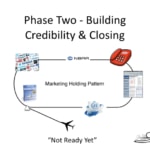
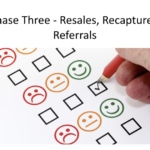

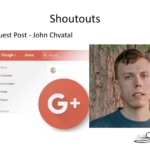


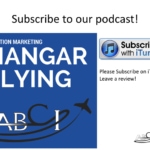





[…] going to be talking about in this story are the same as it would be for FBO marketing or charter marketing, any travel situation or anything else where you’re putting your life in somebody’s […]
[…] FBO Marketing|AMHF 0076 – FBO Marketing – More Planes & More People! Previous […]
[…] All right. So, a lot of people who are in charter say, “Our competition is super high end. The videos that we’ve seen […]
Thanks for sharing all these Charter Marketing tips! This is very helpful to us whos only starting. Thanks again!
Glad to be helpful, Rosalina! Let me know if you run into any questions we can answer for you.
Thanks for sharing this useful blog. One of the most integral components to being successful in the charter industry marketing is the promotion of your brand, product, and services.